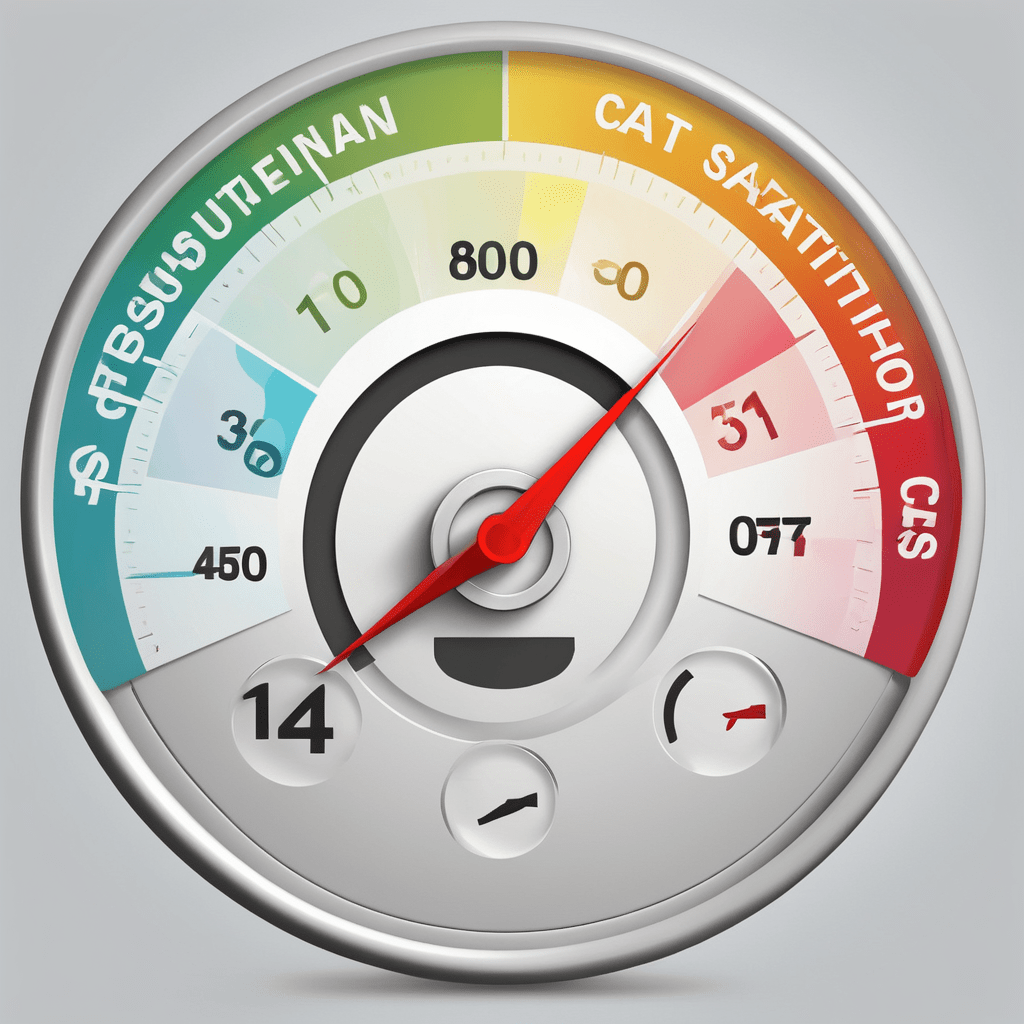In the fast-paced realm of business, staying ahead of the competition requires more than just instinct. it demands informed decision-making backed by data-driven insights. As seasoned entrepreneurs, we understand the critical role that metrics play in steering a business toward success. In this comprehensive guide, we delve into the 7 key metrics every business owner should vigilantly monitor to achieve sustainable growth and outshine competitors. ( Best Business Owner Should Monitor )
Conversion Rate: Transforming Clicks into Conversions
Your website is the digital face of your business, and maximizing its effectiveness requires a keen eye on the conversion rate. This metric measures the percentage of visitors who take a desired action, whether it’s making a purchase, signing up for a newsletter, or filling out a contact form. By constantly optimizing your website’s design, content, and user experience, you can boost this critical metric and turn casual browsers into loyal customers.
The conversion rate is a pivotal metric that indicates how well your website converts visitors into customers or leads. Achieve a 5% conversion rate with 1000 monthly visitors, translating to 50 successful actions on your website. Analyzing and improving this metric involves understanding user behavior, A/B testing, and refining your website to encourage more actions that align with your business goals.
Customer Acquisition Cost (CAC): Efficient Spending for Maximum Impact
In the realm of business, efficiency is the name of the game. Calculating the Customer Acquisition Cost (CAC) helps you understand how much it costs to acquire a new customer. By keeping this metric in check, you can allocate your marketing budget more effectively, ensuring that every dollar spent brings invaluable returns. Analyzing the CAC empowers you to fine-tune your marketing strategies, identifying channels that deliver the best bang for your buck. Business Owner Should Monitor.
Customer Acquisition Cost is the total cost incurred in acquiring a new customer, encompassing marketing expenses, advertising costs, and any other investments made to bring in new business. For instance, if you spend $1000 on a marketing campaign that results in 20 new customers, your CAC is $50 per customer. Lowering this cost involves optimizing marketing channels, targeting the right audience, and maximizing the efficiency of your customer acquisition efforts. ( Best Business Owner Should Monitor )
Customer Lifetime Value (CLV): Nurturing Long-Term Relationships
Building a sustainable business requires more than just acquiring customers; it involves fostering lasting relationships. The Customer Lifetime Value (CLV) is a pivotal metric that quantifies the total revenue a customer is expected to generate over their lifetime. By prioritizing customer satisfaction, engagement, and loyalty programs, you can enhance CLV, ensuring that each customer becomes a long-term asset to your business.
Customer Lifetime Value is the predicted revenue a customer is expected to generate throughout their association with your business. To calculate CLV, consider the average purchase value, purchase frequency, and customer retention rate. For instance, if a customer makes an average purchase of $50 every month, and the average retention is 12 months, the CLV is $600. Elevating CLV involves strategies such as personalized marketing, exceptional customer service, and loyalty programs that incentivize repeat business.
Website Traffic Sources: Understanding the Journey
The origin of your website traffic holds valuable insights into your audience and the effectiveness of your marketing channels. Monitor and analyze your website traffic sources meticulously. Are your visitors coming from organic search, paid advertisements, social media, or other channels? By understanding this, you can tailor your marketing strategies to capitalize on the most fruitful sources, optimizing for increased visibility and engagement.
Website Traffic Sources provide a roadmap to understand how users discover and engage with your website. Organic search indicates visitors from search engines, paid advertisements from online ads, and social media from various platforms. By utilizing tools like Google Analytics, you can delve into the specifics, identifying which sources bring in the most engaged audience. This insight helps in refining your marketing efforts, focusing on channels that yield the best results for your business. ( Best Business Owner Should Monitor )
Social Media Engagement: Connecting Beyond Boundaries
In the digital age, social media is a powerful force that can elevate your brand and foster meaningful connections. Keeping a close eye on social media engagement metrics such as likes, shares, comments, and click-through rates allows you to gauge the effectiveness of your social media presence. By crafting compelling content and fostering authentic interactions, you can not only boost engagement but also strengthen your brand’s online presence.
Social Media Engagement Metrics offers a snapshot of how your audience interacts with your brand on platforms like Facebook, Instagram, Twitter, and LinkedIn. Likes, shares, comments, and click-through rates are key indicators of audience interest and interaction. To enhance social media engagement, focus on creating shareable content, responding promptly to comments, and fostering a community around your brand. Consistency and authenticity play crucial roles in building a strong social media presence. ( Best Business Owner Should Monitor )
Return on Investment (ROI): Maximizing Marketing Effectiveness
Every marketing endeavor should be a strategic investment, and measuring its success is imperative. Calculating the Return on Investment (ROI) ensures that your marketing efforts are generating tangible returns. By scrutinizing the ROI for each campaign, you can identify high-performing strategies and reallocate resources for maximum impact, eliminating inefficiencies and propelling your business forward.
Return on Investment is a performance metric that assesses the profitability of an investment, particularly in marketing campaigns. It’s calculated by dividing the net gain from the investment by the initial cost and multiplying it by 100 to get a percentage. For example, if a marketing campaign costs $1000 and generates $5000 in revenue, the ROI is 400%. ROI analysis optimizes marketing spend, prioritizing high-return initiatives and eliminating those with minimal impact on your bottom line. ( Best Business Owner Should Monitor )
Customer Satisfaction Score (CSAT): Ensuring Delightful Experiences
In all firms, it is liked that their customers experience enthusiasm and feel satisfied to the maximum possible extent. However, the truth remains that these clients represent the core needed to ensure the business keeps on fructifying. Perhaps, one of the best ways for businesses to understand how their customers are doing is through customer Satisfaction Scores (CSS) tracking.
The CSAT offers a quantitative indicator that identifies the degree of loyalty a customer has to a business due to his interactions and dealings with it. This is often the main tool surveyors rely on to measure satisfaction. This tool might ask clients to mark on a numeric scale like a 5-point or 10-point scale different aspects of their experience. If almost all customers choose the higher ratings, the company can be assured they are satisfied. A company can then take necessary steps to maintain its high levels of customer satisfaction. Nonetheless, high figures demonstrate where we are excelling, while lower ones signify the grounds for improvement.
Monitoring the customer satisfaction index (CSAT) for the company provides strong evidence that, indeed, business owners/managers, who want their companies to do well, need to be on top of it. First, great customer experience is a direct consequence of strong customer retention and loyalty. Happy customers tend to make use of service almost repeatedly and will most probably continue using the company’s service in the future. They likewise belong to the category of strong supporters who discuss the business with their friends and acquaintances in a positive brand exposure scenario. Thus, this type of marketing brings the same customers back and desperately asks for referrals that are as good as free promotion and they succeed.
On the flip side of this, if customer dissatisfaction arises, trust could be eroded quickly, and customers’ finances might not be in the interest of the business. In addition, those individuals Fed up mostly attract more attention and place their harsh words and unfriendly experiences in public. No business can fare and survive with a lot of customers chatting and spreading bad publicity that might scare new customers.
As such, a smart leader having the College Satisfaction Assessment metric at hand, can promptly recognize the bottlenecks that might delay the overall customer experience. For instance, suppose the satisfaction scores breakdown shows that product quality rates are low while service satisfaction remains high. Surely, the company will not only know that product quality, especially on the production side, needs to be improved but also that service is doing good. An unexpected number of returns and a rise in product complaints could be signals that something is wrong with the products. CSAT provides for right channels to take the steps toward the exact areas needed to develop.
To conclude, customer monitoring would be complementary to all business operations leading to the achievement of targeted goals. Csat indicator opens up great opportunities for companies to adjust the customer experience continuously, which will make for happy and loyal customers. Similarly, no business stands no chance for success except when its clients feel that they can rely on it. Something this is what customers get is willingness rather than reluctance to be proud of the company they buy from. ( Best Business Owner Should Monitor )
Conclusion ( Best Business Owner Should Monitor )
Mastering these 7 key metrics is the secret sauce to propelling your business to new heights. By vigilantly monitoring and optimizing these parameters, you can make informed decisions, maximize efficiency, and outshine competitors in the dynamic. Business Owner Should Monitor. ( Best Business Owner Should Monitor )
Web Hosting for WordPress Website
Choosing the proper web hosting provider is one of those decisions when you create a WordPress website that will determine its success. Your hosting decision may have a significant impact on your site’s performance, security, and scalability. Within this in-depth guide, we will take you through the essential criteria that should be taken into account when choosing WordPress hosting.








